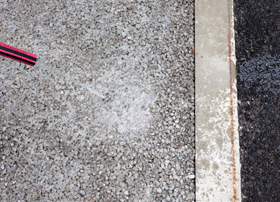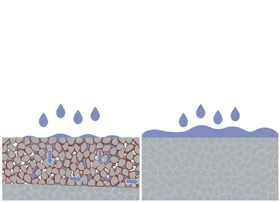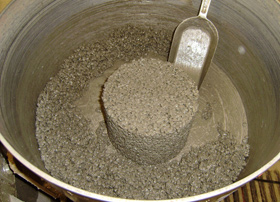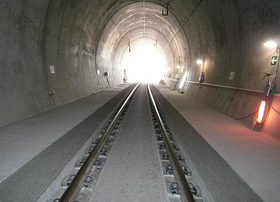- About WACKER
- Press & Media
- Press
- features
New Polymers for Water-Permeable Concrete Tracks: The Bebenroth Tunnel Project
Apr 18, 2013
Presspicture

Drainage Concrete - Test Section
Test section of drainage concrete. While the water builds up on normal concrete or asphalt and runs off slowly (right side of photo), it can drain away easily and quickly on the new drainage concrete (left).
Order photo
ETONIS® 260
Water-permeability test: Open-pored concrete modified with ETONIS® 260 facilitates the transport of moisture (left), while on conventional solid concrete, water builds up and runs off slowly (right). This results in far fewer cracks forming in the new concrete and augments its resistance to frost and road salts.
Order photo
ETONIS® 260 - Drainage Concrete
Freshly mixed drainage concrete in laboratory trials: the open-pored structure and pores can be clearly seen. Thanks to the new ETONIS® 260 polymer, the non-slump fresh concrete does not flow or disintegrate at the edges – this is a vital prerequisite for level track surfaces.
Order photo
ETONIS® 260 - Rail-road Tunnels
Drainage concrete modified with ETONIS® 260 is spread between and beside tracks and thus provides rescue vehicles and fire trucks with fast access to rail-road tunnels. The new concrete is quick to put down, extremely durable and stable, and thus ideal for applications in road, tunnel and under-ground construction (photo: Wacker Chemie AG, courtesy of Deutsche Bahn AG).
Order photoContact

Wacker Chemie AG
Media Relations & Information
Nadine Baumgartl
Tel. +49 89 6279-1604
Email nadine.baumgartl@wacker.com
Send Message
Download
Press Information
(PDF | 345 KB)
